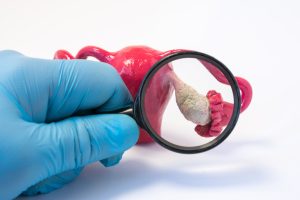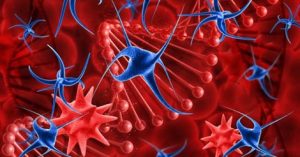Overview Primary ovarian insufficiency, also known as premature ovarian insufficiency, is a condition wherein the ovaries cease normal functioning before the age of 40. This results in an inadequate production of the hormone estrogen and irregular release of eggs. One of the notable consequences is infertility, making it a significant concern for affected individuals. While
Overview
Primary ovarian insufficiency, also known as premature ovarian insufficiency, is a condition wherein the ovaries cease normal functioning before the age of 40. This results in an inadequate production of the hormone estrogen and irregular release of eggs. One of the notable consequences is infertility, making it a significant concern for affected individuals. While it was previously labeled as premature ovarian failure, the medical community has transitioned to the more accurate term of primary ovarian insufficiency.
It is crucial to differentiate primary ovarian insufficiency from premature menopause. Unlike the latter, individuals with primary ovarian insufficiency may experience irregular or occasional periods for years and, in some cases, even achieve pregnancy. In contrast, premature menopause entails the cessation of periods altogether, making conception impossible.

Image by: yendex.com
Symptoms
The symptoms of primary ovarian insufficiency closely resemble those of menopause or low estrogen levels. Understanding these indicators is essential for early detection and intervention. The symptoms include:
- Irregular or Missed Periods: This symptom may persist for years and can manifest after a pregnancy or the cessation of birth control pills.
- Trouble Getting Pregnant: Infertility is a common consequence of primary ovarian insufficiency.
- Hot Flashes and Night Sweats: Sudden and intense sensations of heat, often accompanied by sweating, are common.
- Vaginal Dryness: Reduced estrogen levels can lead to dryness and discomfort in the vaginal area.
- Emotional Changes: Individuals may experience heightened levels of anger, depression, or anxiety.
- Trouble with Focus or Memory: Cognitive functions may be affected, leading to difficulties in concentration and memory.
- Less Sexual Desire: Reduced estrogen can contribute to a decline in sexual desire.

Image by: yendex.com
When to See a Doctor
If an individual misses their period for three months or more, seeking consultation with a healthcare professional is essential to identify the underlying cause. While missed periods can occur for various reasons such as pregnancy, stress, or changes in lifestyle, a healthcare checkup is recommended whenever there is a change in the menstrual cycle.
Even if the absence of periods is not a significant concern, consulting a healthcare professional is crucial to determine the cause. Low estrogen levels associated with primary ovarian insufficiency can lead to conditions like osteoporosis, a condition causing weak and brittle bones, and an increased risk of heart disease.

Image by: www. money owl.com
Causes
Understanding the causes of primary ovarian insufficiency is complex, and it can result from various factors. These include:
- Chromosome Changes: Some individuals with primary ovarian insufficiency may have genetic conditions, such as mosaic Turner syndrome, where one X chromosome is altered. Others may have fragile X chromosomes, which can break, leading to the condition.
- Toxins: Exposure to toxins through chemotherapy, radiation therapy, cigarette smoke, chemicals, pesticides, and viruses can contribute to toxin-induced ovarian insufficiency. These treatments may damage genetic material in cells.
- Autoimmune Response to Ovarian Tissue: In rare cases, an autoimmune response occurs, where the immune system mistakenly produces protective proteins attacking ovarian tissue. This damages the sacs in the ovaries containing eggs, known as follicles. The triggers for this immune response are not entirely clear, but exposure to viruses may play a role.
- Unknown Factors: Often termed as idiopathic, the cause of primary ovarian insufficiency remains unclear in many cases. Additional testing may be recommended by healthcare professionals to uncover the underlying cause.

Image by: yendex.com
Risk Factors
Several factors contribute to an increased risk of developing primary ovarian insufficiency:
- Age: The risk escalates between the ages of 35 and 40, with primary ovarian insufficiency being rare before the age of 30. However, it can affect younger individuals, including teenagers.
- Family History: Having a family history of primary ovarian insufficiency raises the risk of developing the condition.
- Ovarian Surgery: Surgeries involving the ovaries can elevate the risk of primary ovarian insufficiency.

Image by: cdn.britannica.com
Complications
Primary ovarian insufficiency can lead to various health complications, including:
- Infertility: The inability to conceive is a significant complication of primary ovarian insufficiency. In rare cases, pregnancy may still be possible until the body’s supply of eggs is depleted.
- Osteoporosis: Reduced estrogen levels contribute to weakened and brittle bones, increasing the risk of osteoporosis.
- Mental Health Issues: Depression or anxiety may arise due to concerns about infertility and other conditions associated with low estrogen levels.
- Heart or Blood Vessel Disease: Early loss of estrogen may elevate the risk of heart conditions or stroke.
- Dementia: The risk of dementia may be linked to the removal of both ovaries without subsequent estrogen therapy in individuals under the age of 43.
- Parkinson’s Disease: There is a higher risk of Parkinson’s disease, potentially associated with ovary removal surgery.

Image by: www.indushealthplus.com
Treatment and Prevention
The primary goal of treating primary ovarian insufficiency is to restore estrogen levels, mitigating the risk of associated health conditions. Timely intervention is crucial for maintaining overall well-being. Estrogen restoration therapy is a common approach to address hormonal imbalances and prevent complications. Treatments for other health problems
Primary Ovarian Insufficiency vs. Premature Menopause
| Criteria | Primary Ovarian Insufficiency | Premature Menopause |
|---|---|---|
| Age of Onset | Before age 40 | Generally after age 40 |
| Menstrual Cycles | Irregular or occasional for years | Absence of periods |
| Fertility | Possible, but reduced | Not possible |
| Hormonal Imbalance | Reduced estrogen production | Estrogen levels decline completely |
| Treatment Options | Estrogen restoration therapy | Symptomatic relief |
This comprehensive guide provides an in-depth exploration of primary ovarian insufficiency, offering valuable information for those affected and the broader community. Understanding the nuances of this condition is essential for timely diagnosis, intervention, and the overall well-being of individuals dealing with primary ovarian insufficiency.
Conclusion
In conclusion, understanding primary ovarian insufficiency is paramount for early detection and effective management. Recognizing the symptoms, causes, and risk factors empowers individuals to take control of their reproductive health. Regular check-ups, awareness, and access to relevant resources contribute to a proactive approach in addressing primary ovarian insufficiency.
















